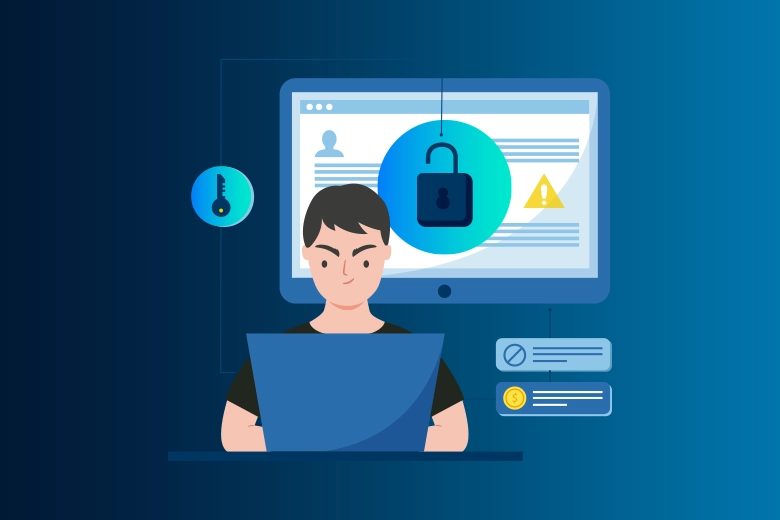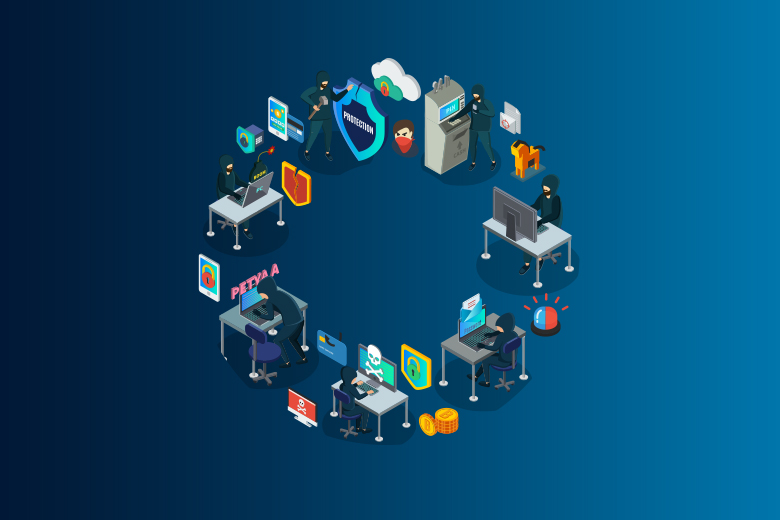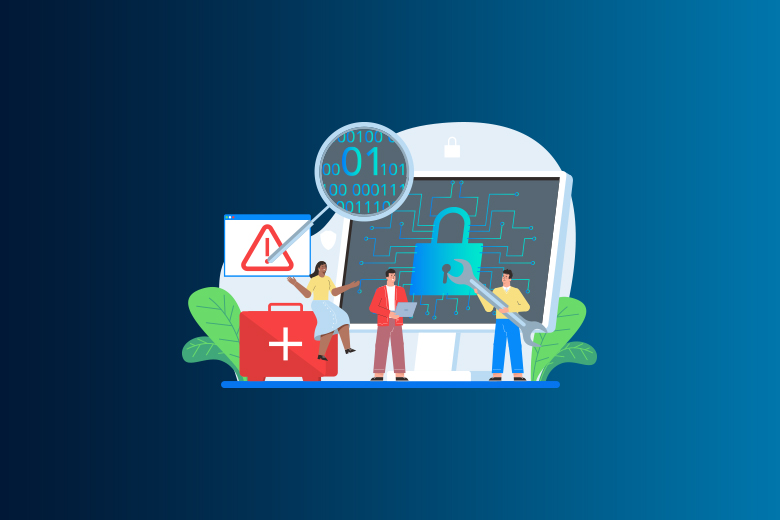29 March 2024
SafeAeon Inc.The internet, with its ever-expanding reach, has become the lifeblood of modern society. We depend on being able to connect to the internet for everything from global conversation and entertainment to driving e-commerce and powering important infrastructure. Connectivity is good in some ways, but it can also be bad because it leaves networks open to attacks from bad people. Distributed Denial-of-Service (DDoS) attacks, especially those that target Layer 7, are becoming a bigger problem. These attacks could shut down online services by sending a huge amount of fake data to them.
Layer 7 DDoS attacks are very smart and precise, unlike brute-force attacks that flood computers with raw data. They are going after the Open Systems Interconnection (OSI) model's application layer (Layer 7). This is the layer where people interact with web apps. When compared to regular DDoS attacks, this surgical method makes them much smarter and much harder to find and stop.
There are a lot of things that are making the worrisome rise in Layer 7 DDoS attacks worse. A shocking fact was found in a recent study by Imperva in Q3 2023: 78% of all DDoS attacks in the world are now Layer 7 attacks. This is a big jump from past years and shows how dangerous they are becoming. Several major trends can be blamed for this rise. First, attackers can get in through a lot of different points because web apps are getting more complicated all the time. Second, the fact that hacking has become a commodity has led to a lot of "DDoS-as-a-Service" tools being available on the dark web. These tools, which are easy to get, make it easier and more accessible for even experienced bad guys to start complex attacks.
A Layer 7 DDoS attack can have terrible results. Businesses are the ones who are most affected by the attack. They lose a lot of money because of service interruptions, damage to their image, and the chance that customers will lose trust in them. Critical infrastructure providers could have important services like healthcare or energy grids interrupted by a successful DDoS attack. This would be a big security risk and put people's safety at risk.
Businesses of all kinds need to understand how Layer 7 DDoS attacks work and what effects they might have. Businesses can make sure their websites stay online and protect their networks from this growing cyber threat by putting in place strong security measures and cutting-edge DDoS prevention solutions.
Mitigating Layer 7 Attacks
Businesses are at great risk from Layer 7 DDoS attacks, and many are having trouble redirecting and stopping these attacks successfully. Still, several things can be done to make Layer 7 DDoS attacks less likely.
Set up monitoring and alerts in real-time.
Adopting real-time tracking for constant traffic observation is a key step toward prevention. This method gives a full picture of normal traffic patterns, which makes it easier to spot traffic spikes that aren't normal or aren't intended to be harmful. With real-time alerts, this system makes sure you're always aware of any strange traffic patterns, which helps you respond.
Make your own rules and regulations.
Setting up custom rules and policies in your Web Application Firewall (WAF) makes it better at filtering. Implementing rate-limiting rules, for example, can stop clients from making too many requests, keeping your app, server, or website from becoming too busy with traffic.
Advanced Security Analytics should be used.
Using behavioral analytics, which is driven by AI and machine learning, lets you keep an eye on how people use the internet. As part of this method, logs and data are looked at to spot any behavior that doesn't seem normal. Real-time reports made from this analysis let more research be done to find out if the rise in traffic is malicious.
Get help from a professional
Having security experts on board who know the best ways to keep your data safe is very helpful in stopping Layer 7 DDoS attacks. To protect against Layer 7 and other types of DDoS attacks, they must know how to use different defense methods, tools, and technology. They can also help you make rules that are specific to your WAF.
Important Things to Keep in Mind
- Layer 7 DDoS attacks try to stop websites, servers, or apps from working by sending too much HTTP data to them.
- Because these attacks can look like regular traffic increases or simple surges, they can be hard to spot and stop.
- Different people launch Layer 7 DDoS attacks for different reasons, but one of the most popular ones is to demand a ransom.
- To be ready for Layer 7 DDoS attacks, you need to know about the different ways they can happen, such as HTTP floods, cache-bypass HTTP floods, WordPress XML-RPC floods, and Slowloris attacks.
- Strong monitoring, analysis, and notification systems must be in place to successfully defend against Layer 7 DDoS attacks. This makes sure that strange traffic patterns or ongoing threats can be quickly found, understood, and shared. Talking to pros in cybersecurity can also give you useful ideas and plans.
What Makes Layer 7 Attacks Possible?
People who are malicious want to launch Layer 7 strikes for several reasons, such as
Taken hostage and ransom
Usually, the main reason for DDoS attacks is to make money through theft and ransomware. Attackers use Layer 7 to shut down a company's online services and then demand payment to fix them.
An edge in the market
Some businesses use these illegal strategies to get ahead in the business world. By using Layer 7 attacks to stop a rival from doing business online, they hope to get people to use their services instead, which will increase their market share and profits.
Political Statements:
Layer 7 attacks are sometimes used to stop political activities or say bad things about certain political groups or ideas. Attacking political campaigns' websites and servers can make it harder for them to get their word out or get people to support them.
Layer 7 distraction attacks can also be used as a cover to keep security teams from noticing other bad things that are happening. Attackers take advantage of weaknesses to commit more serious crimes, like stealing private data, while security resources are focused on stopping these attacks.
Most Common Layer 7 Attacks
The most common type of application-layer DDoS attack is: Flooding of HTTP
There are four different types of HTTP flooding attacks:
Basic HTTP Floods: In these simple attacks, the same site or resource is accessed over and over again. Attackers always use the same set of IP addresses, user agents, and referrers. The server finally crashes because it can't handle all the calls.
Randomized HTTP Floods: In this type, URLs, user agents, and referrers are all changed randomly, along with a wide range of IP addresses. Botnets usually use a group of malware-infected computers to send these complicated GET/POST requests.
Cache-Bypass HTTP Floods: These attacks are a type of random HTTP floods that try to get around web application caching. Attackers use methods like looking for material that hasn't been cached, which uses up a lot of server resources and causes it to go down.
WordPress XML-RPC Floods: Attackers use the pingback feature of WordPress as a mirror to make the flooding attack stronger.
Random HTTP flooding and cache-bypass HTTP flooding are two of the most common types of this.
When Slowloris Attacks:
Slowloris attacks are known for being easy to use and very successful. They send payloads to the server slowly over time. This method fills up the server's connection pool, making it harder for real users to join.
Keeping you safe from Layer 7 attacks
Layer 7 DDoS attacks are hard to spot because they are sneaky and look like they are real. For DDoS protection to work, it should:
- Protect people all the time and send them tips in real-time.
- Allow rules and standards to be changed.
- Support from qualified security experts should be included.
- Give security data to get ready for future attacks.
- Make sure that you can see the risk position in real-time.
- However, a lot of DDoS security services only deal with volumetric attacks and don't offer full Layer 7 protection.
- For continuous web application availability, it is important to choose a DDoS security service that includes an intelligent, managed WAF.
Conclusion
Online services are in big danger from Layer 7 DDoS attacks. By taking advantage of application layer weaknesses, they break confidentiality and availability. It's getting easier for these attacks to work. Because of this, it is very important to have thorough security plans. It is very important to take steps like using application-layer defenses. A big part is also played by intrusion monitoring systems and strong traffic analysis. They help protect your network from these threats. In addition, it's important to know about the newest attack trends. It is very important to keep a proactive cybersecurity stance. To keep your network safe from Layer 7 DDoS attacks, you must follow these steps. Companies can protect their digital assets by focusing on these defense methods. This makes sure that the service is always available to real people. SafeAeon turned out to be the safest bet to assure impeccable protection from Layer 7 DDoS attacks.














